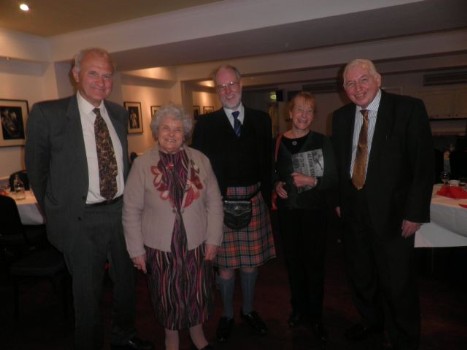
1st March, Alastair Alexander: an episode from the role played by the Clyde
in the Second World War
When a German u-boat sunk the passenger liner Athena off Shetland right at the start of the war in September 1939, measures taken to protect the Clyde included a boom from Cloch Point and Dunoon, with gun-batteries there and also at Toward Point. Admiral Donitz was determined to strike a blow at the heart of allied defences, and showed up their weakness when on 31 October
1939 U-47 penetrated Scapa Flow to sink the Great War battle-ship Royal Oak with the loss of 800 lives.
German jubilation was great at this demonstration that Orkney was now unsafe, and when the fleet tried to switch to Loch Ewe mines placed by Donitz claimed HMS Nelson as another victim. So with the world's largest ship the Queen Elizabeth awaiting fitting-out at John Brown's yard in
Clydebank Donitz decided to lay mines in the Clyde, and U-32 left Wilhemshavn to lay mines in Ayrshire but her delayed arrival coincided with that of HMS Hood returning from patrol, and for his failure to press home the mine-laying operation in the Clyde the commander did not regain that
rank until 1943. U-32 went on to meet its end sinking the liner Empress of Britain, the largest merchant ship lost in the Battle of the Atlantic.
Now U-33 was despatched instead, arriving in the Clyde at midnight on 11 February 1940 two days after Britain's largest warship HMS Hood and HMS Warspite had left the Clyde with eight destroyers to give cover to Scandinavian convoys. However engine-noise was detected by the new echo-detecting Asdic technology aboard HMS Gleaner on her triangular patrol between Pladda and Ailsa Craig. The minesweeper dropped depth charges to such desperate effect that the order was given to blow the tanks and for the crew to abandon ship as soon as the surface was broken. Scuttling charges were then set off to protect the Enigma encoding machine, present on board for reasons that remain a mystery, whose key components crewmen had been ordered to throw into the Clyde as they emerged on deck.
The bodies of three crew-members and commander Wilhelm von Dresky are still in the submarine from which oil continues to percolate. 17 survivors were conveyed to Greenock by the Gleaner's captain who received the DSO, and the 23 other dead were buried initially there then transferred 22 years later to the German military cemetery in Cannock, Staffordshire. Specialist divers seeking the Enigma machine following the discovery of its wheels in a German's pocket found the wreck easily because it was sitting on a shale-surfaced area of the seabed which was therefore seaweed-free.
The salvage operation recovered rotors and other vital components, the first time that any parts of an Enigma machine had been recovered in wartime, and they were despatched in great secrecy to Bletchley Park for cracking of its codes by the intelligence boffins. One of the survivors Max Schiller served as a prisoner of war on an Ayrshire farm where he married a local girl, spending the rest of his life in Scotland and laying a wreath in memory of his dead colleagues two years before his own passing in 2002. Detection of the U-33 had been the first successful use of Asdic, which went on to become better-known by its American name Sonar.